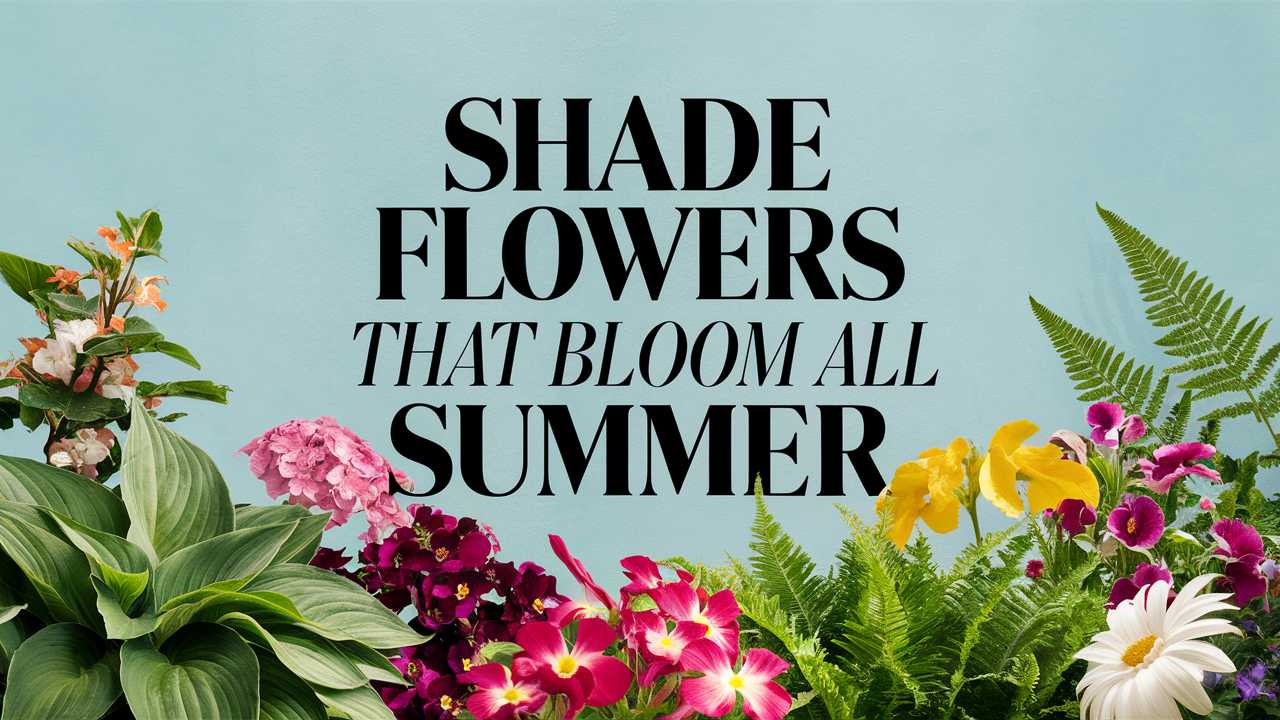In this guide, we will explore an array of shade flowers that bloom all summer long, each with its unique charm and characteristics. Grab a cup of tea, settle in, and let’s uncover some hidden treasures of the shade garden.
Toad Lily
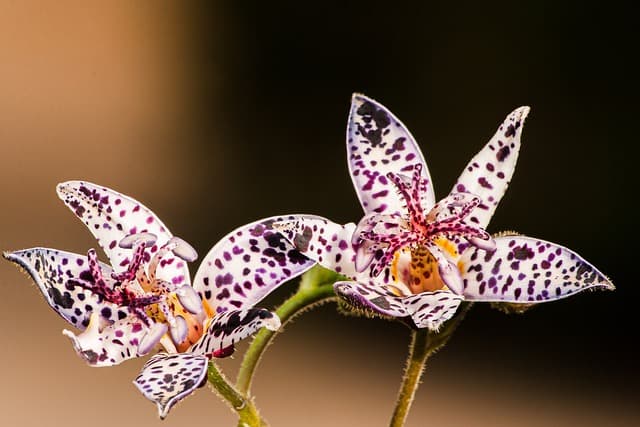
Toad Lily, known scientifically as Tricyrtis, is a unique perennial that truly thrives in shady conditions. This plant dazzles with its spotted, orchid-like flowers, usually appearing from late summer to early fall. Toad Lilies can grow up to three feet tall and often provide a whimsical look to your garden as they peek out from under taller plants. Their tolerance of moist, shady spots makes them perfect companions for woodland gardens. Additionally, they are low-maintenance – requiring minimal care while providing an impressive display.
Celandine Poppy
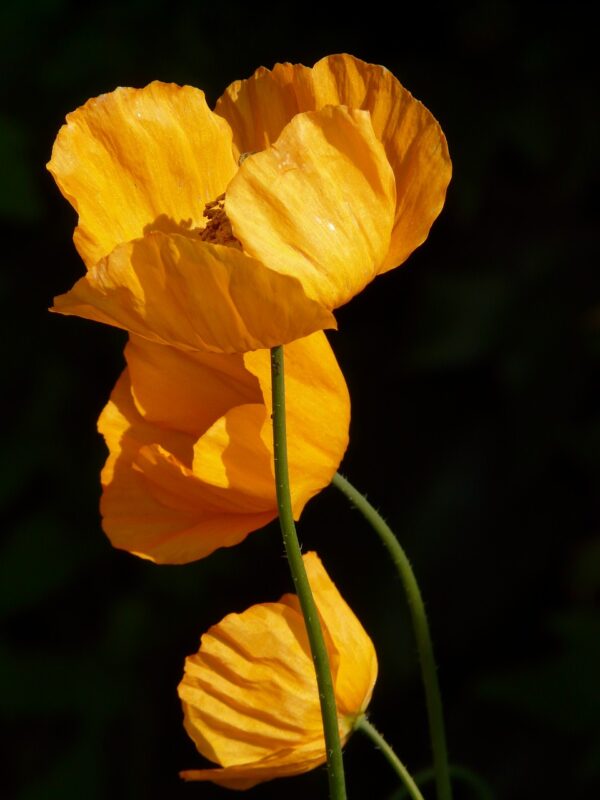
Celandine Poppy, or Stylophorum diphyllum, showcases vibrant, yellow blooms that brighten the darker corners of your garden. Thriving in rich, moist soils, this native plant offers stunning flowers from late spring to early summer, often continuing into July. The large, lobed leaves are quite attractive, providing an inviting backdrop for the cheerful blooms. Beyond their beauty, Celandine Poppies are a great choice for attracting pollinators like bees and butterflies, thereby enhancing biodiversity in shaded areas.
Meadowsweet

Meadowsweet, or Filipendula ulmaria, is a delightful perennial perking up damp, shady spots. Known for its frothy clusters of fragrant, creamy-white to pink flowers appearing throughout summer, Meadowsweet captures attention with its aromatic foliage and sturdy stems. This perennial is a relative of the rose family and prefers moist conditions, making it ideal for edges of ponds or streams. Besides its ornamental qualities, its historical use in traditional medicine adds another layer of interest to this thoughtful addition to your shade garden.
Leopard Plant
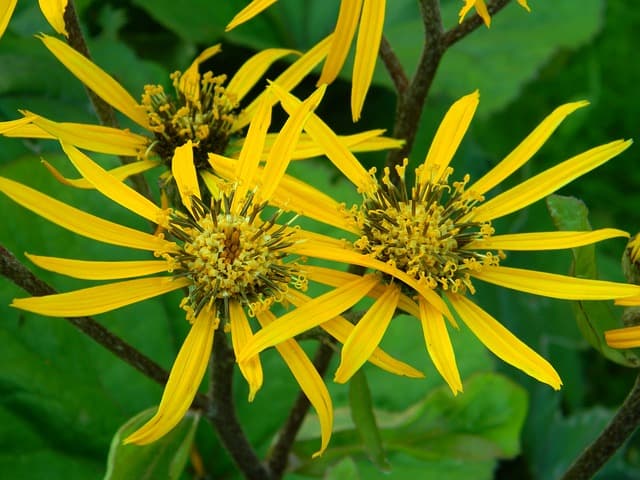
The Leopard Plant (Farfugium japonicum) is as striking as its name suggests. With glossy, broad leaves adorned with distinctive yellow-spotted patterns, this perennial can grow up to 3 feet tall. In mid-summer, it showcases clusters of brilliant yellow flowers that rise above the foliage, creating a stunning effect against the lush green backdrop. Tolerant of wet soils, the Leopard Plant thrives in shade and makes for an excellent choice in bog gardens or shaded woodland settings.
Purple Profusion Spiderwort
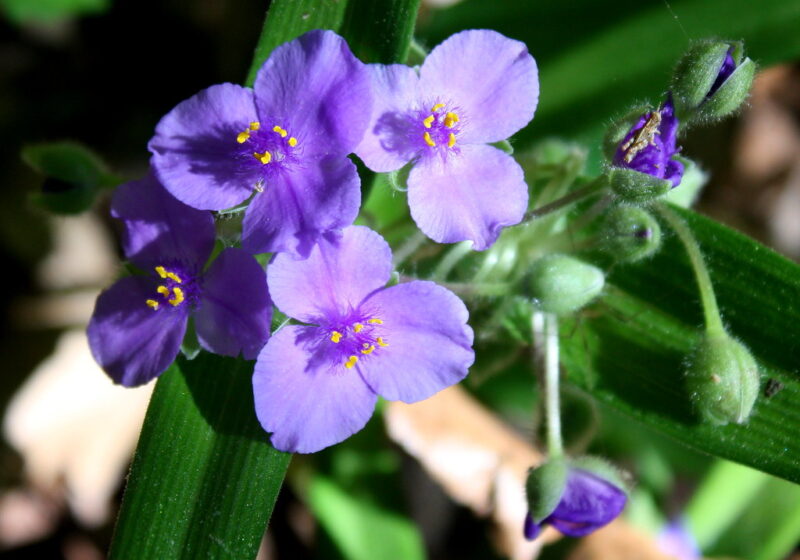
The Purple Profusion Spiderwort (Tradescantia×virginiana) provides a splendid splash of color with its three-petaled purple flowers that bloom throughout the summer. The foliage is grass-like and glows with a rich green hue, offering a beautiful contrast to the striking flowers. This resilient plant is perfect for relaying a soft, painterly backdrop across shade gardens or under the canopy of trees, producing blooms that open in the morning and close at dusk, adding a dynamic quality to your space.
Siberian Bugloss
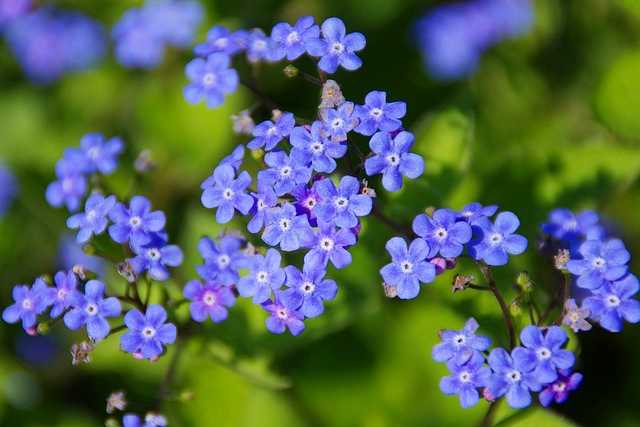
Brunnera macrophylla, commonly known as Siberian Bugloss, is often celebrated for its heart-shaped leaves that provide interest all summer long. In addition to its attractive foliage, it produces clusters of bright blue flowers, sometimes referred to as “false forget-me-nots,” in late spring to early summer. With an ability to adapt to both dry and moist soils, Siberian Bugloss is a versatile addition to your garden, merging beautifully with ferns and other shade-loving plants.
Hardy Fuchsias
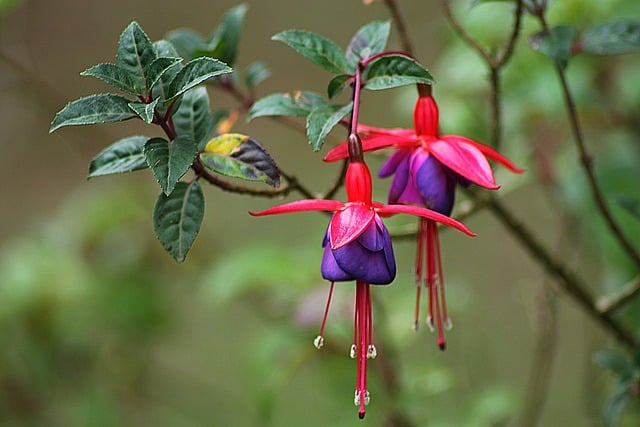
When one thinks of shade-loving flowers, Fuchsia comes to mind as a quintessential choice. Hardy Fuchsias bloom profusely throughout summer, offering a dazzling display of pendulous flowers that can range from deep magenta to soft pastels. They thrive in dappled shade and can tolerate varying soil conditions. As their curious, tubular blooms invite hummingbirds, these charming plants can breathe life into a bland corner of your garden, expertly attracting wildlife while providing you with stunning visuals.
Bear’s Breeches
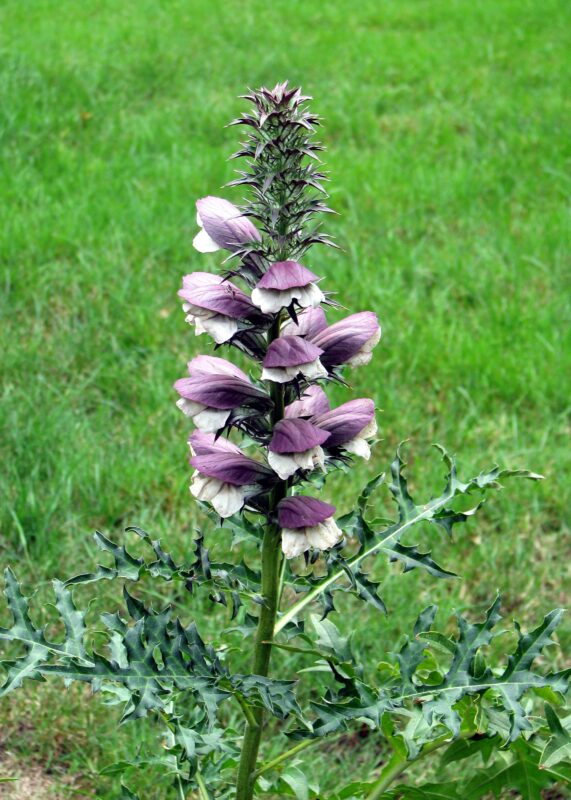
Bear’s Breeches or Acanthus mollis, is a striking architectural plant featuring bold, deeply lobed leaves and stunning flower spikes that resemble unique sculptural elements in your garden. Blooms appear in late spring and continue into summer, with tall, showy purple and white flowers that add height to the shade garden. This perennial is drought-tolerant once established, and its dramatic foliage serves as a fantastic backdrop for other flowering shade plants, creating a lush tapestry of green and color.
Siberian Campanula
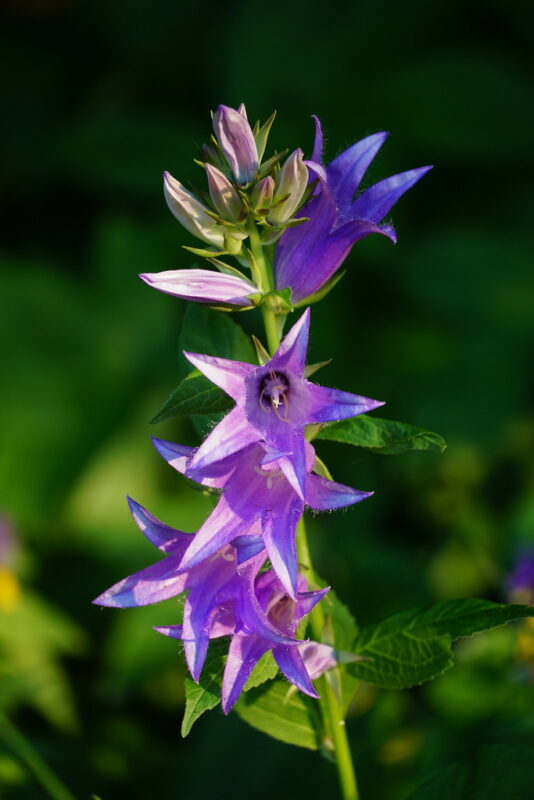
Campanula latifolia or Siberian Campanula is a captivating perennial that offers beautiful bell-shaped flowers. The blooms appear in shades of blue and purple throughout summer, standing tall among the foliage. These hardy plants thrive in partial shade and can tolerate a range of soil types. Siberian Campanula pairs well with other shade-loving blooms and is beloved for its ability to naturalize charmingly in gardens, transforming them into flower-filled havens.
Yellow Fumitory
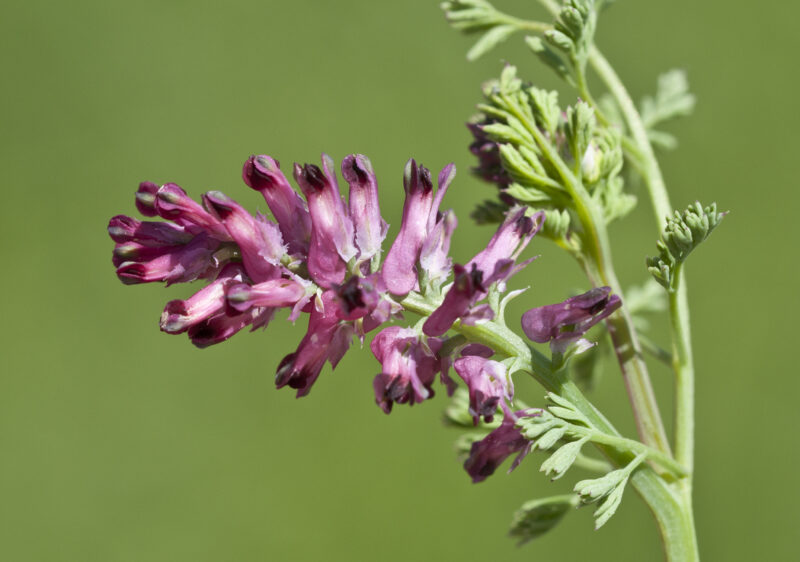
Fumaria officinalis, commonly known as Yellow Fumitory, is often overlooked but deserves a place in your shade garden. With vibrant yellow flowers creating a charming spectacle, this plant thrives in moist, shady environments. The delicate foliage is lacy and soft, drawing attention to the petite, elegant blooms. Yellow Fumitory typically blooms consistently all summer, showcasing its delicate beauty alongside other hardier shade plants.
Georgia Blue
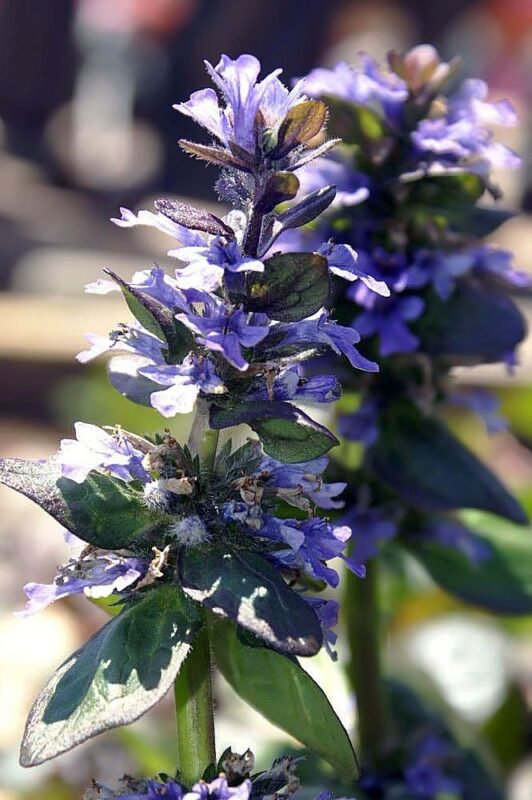
Ajuga reptans or Georgia Blue is a vigorous ground cover that produces enchanting cobalt blue flowers from spring through summer. Known for its ability to thrive in various growing conditions, including shade and partial sun, this resilient perennial spreads quickly, forming dense mats of lush greenery. The contrast of its purple blooms against the glossy foliage creates a beautiful visual, making it an excellent choice for filling in gaps in shady areas or along pathways.
Garden Phlox
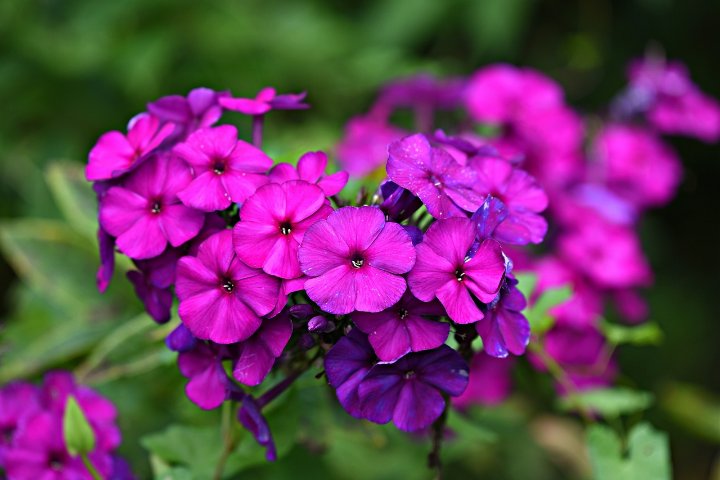
Phlox paniculata or Garden Phlox is a summer classic that commands attention with its colorful clusters of blooms. Available in a range of shades, from bright pinks to soft pastels, Garden Phlox adds bold splashes of color to your shade garden. While they thrive in full sun, many cultivars can tolerate partial shade, providing these beauties with adaptability. Their sweet fragrance makes them even more alluring, as they attract butterflies and bees to your summer garden.
Green-and-Gold
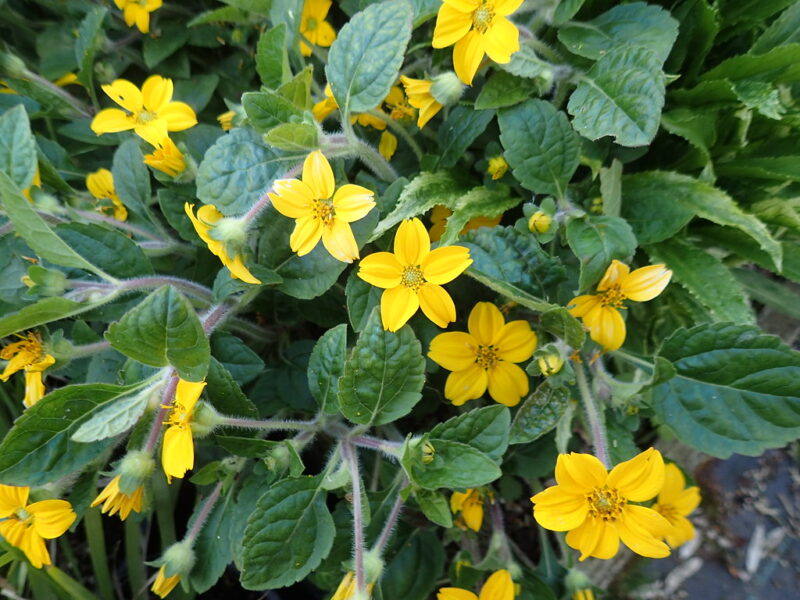
Chrysogonum virginianum or Green-and-Gold is a delightful treasure for shade gardens. This low-growing perennial produces cheerful yellow flowers that adorn its striking green foliage, blooming from spring well into summer. With a creeping habit, Green-and-Gold is perfect for edging pathways or filling in shady spots where other plants might struggle. Its lush foliage complements nearby blooms and provides a textured contrast throughout the growing season.
Stella De Oro
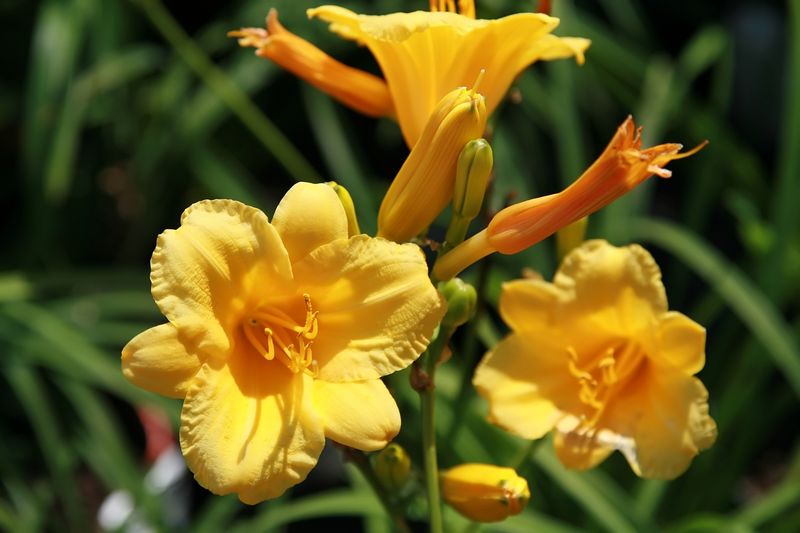
Hemerocallis or Stella De Oro is one of the most popular daylilies and offers a continuous display of bright yellow, star-shaped flowers throughout the summer. While daylilies often thrive in full sun, this particular cultivar is remarkably versatile and can handle some shade. Its fragrant blooms produce a sweet scent that can entice butterflies to your garden. These hardy perennials grow in clumps and are low-maintenance, making them fantastic choices for gardeners of all experience levels.
Mourning Widow
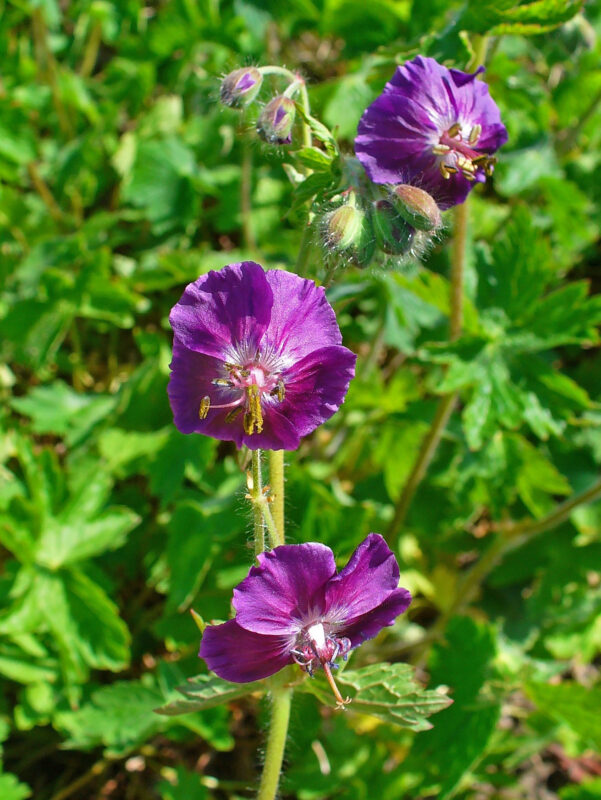
Mourning Widow, or Geranium phaeum, is a lovely perennial providing rich purple-black flowers in intriguing urn shapes. Blooming from late spring to late summer, this shade-tolerant flower features distinctively dark foliage that adds dramatic flair to a garden palette. The Mourning Widow is well suited for woodland settings, where it can thrive in moist, shaded conditions and be the star attraction among ferns and other ground cover plants.
Hydrangeas
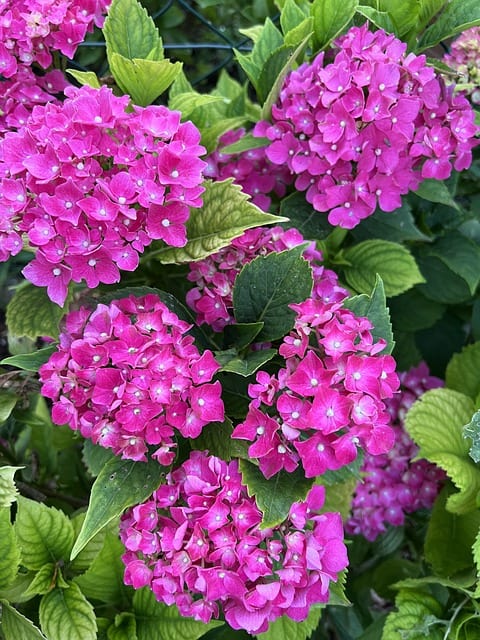
Hydrangeas (Hydrangea macrophylla) are a gardener’s delight, especially for those with shady spots in their landscapes. These popular shrubs bloom profusely throughout summer, offering voluminous flower heads in an array of colors—pink, blue, white, and lavender—depending on soil acidity. Their lush, green foliage enhances their beauty and makes them an exceptional choice for shaded nooks, where they can flourish and provide magnificent displays. Hydrangeas can serve as focal points or as part of mixed borders, bringing visual interest to less sunny areas.
Coral Bells
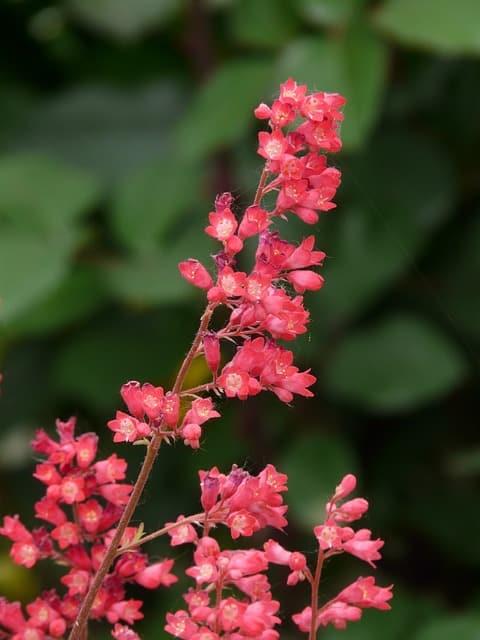
Heuchera, commonly known as Coral Bells, are cherished for their colorful foliage and delicate flowers. These perennial favorites provide blooms from late spring to early summer with spires of tiny flowers that rise above their textured leaves. Available in numerous colors—from deep burgundy to shimmering silver—Coral Bells bring significant visual interest to shady corners. Not only are they a fantastic choice for their flowers, but they also maintain elegant foliage, making a lasting impact throughout the summer season.
Indian Pink
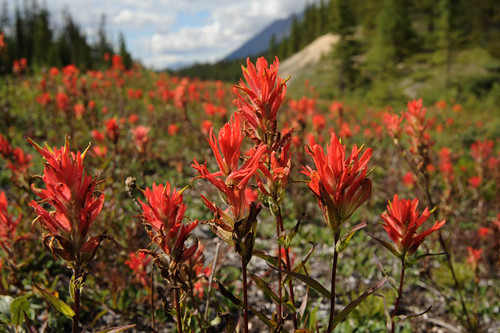
Spigelia marilandica, commonly referred to as Indian Pink, is an eye-catching addition to any shade garden. This stunning native perennial produces vibrant red tubular flowers that appear in clusters on elegantly arching stems during summer. Its glossy leaves provide a beautiful backdrop to the bright blooms, making Indian Pink an excellent choice for naturalistic garden designs. Thriving best in moist, well-drained soils, it often attracts hummingbirds and pollinators, contributing to the biodiversity of your garden ecosystem.
Hostas
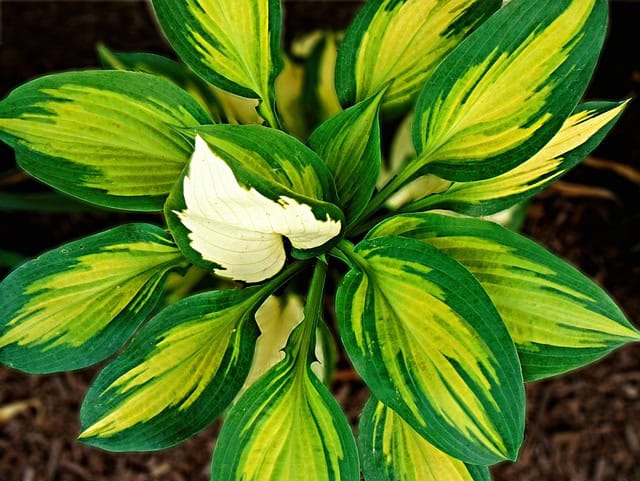
When it comes to shade-loving plants, Hostas are the undisputed champions. Available in diverse colors, shapes, and sizes, these perennial plants absolutely light up shaded areas with their lush foliage. While not known for their flowers, Hostas do produce elegant flower spikes that bloom in late summer, often showcasing delicate lavender or white blooms. The foliage can serve as a stunning backdrop for other blooming plants, and their adaptability makes them an essential component of any shade garden.
Russian Sage
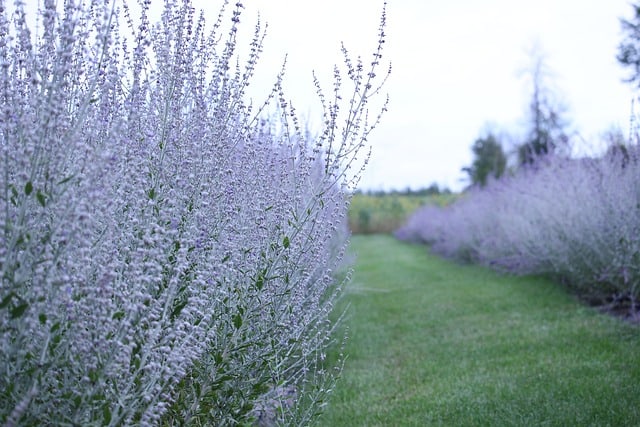
While typically associated with sunny borders, Perovskia atriplicifolia or Russian Sage can tolerate some shade, particularly in hotter climates. During the summer, this perennial produces beautiful spikes of purple flowers that attract pollinators while exuding a soft, silvery appearance. Russian Sage adds a touch of elegance and texture to shade garden compositions, providing an opportunity to create a contrast among heavier foliage plants while still thriving in diverse conditions.
Barrenwort
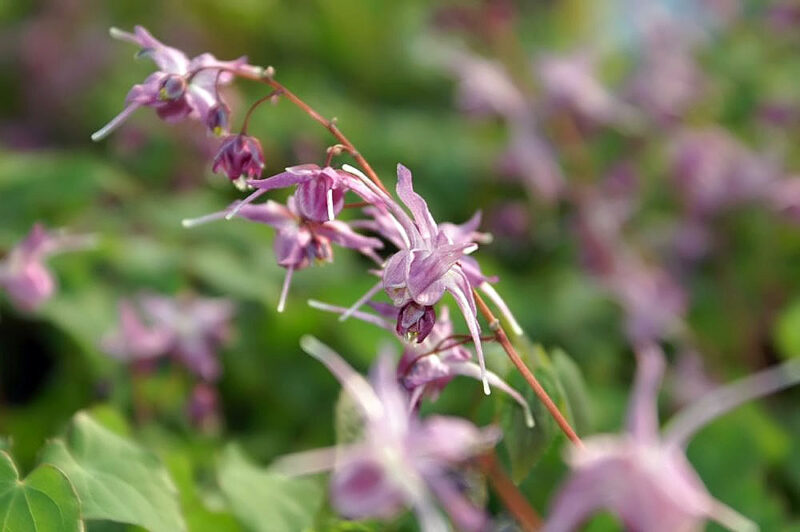
Barrenwort, or Epimedium, is a low-growing perennial that provides lovely heart-shaped leaves and delicate flowers that range in color from yellow to pink or white. Blooming in spring and continuing into early summer, these hardy plants add a soft touch and textural diversity to shady areas. Barrenwort is exceptionally resilient and can tolerate dry conditions, making it ideal for challenging spots beneath trees or in woodland gardens, where it can serve as a lovely ground cover while providing seasonal interest.
Bellflower
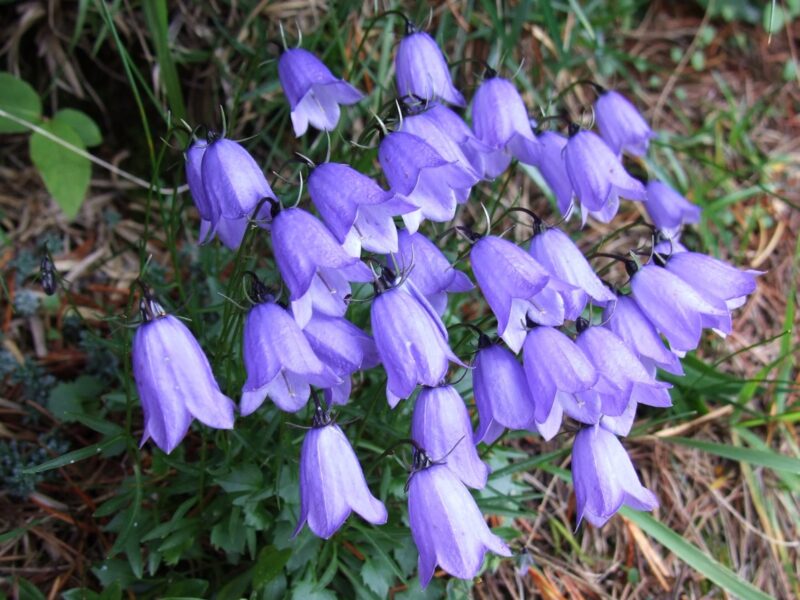
Campanula species, commonly known as Bellflowers, provide plenty of options for shaded gardens. These delightful perennials produce lovely bell-shaped flowers throughout the summer and come in various hues, including blues, purples, and whites. As a versatile choice, they flourish in a range of soils while providing enchanting backdrops for other shade-loving plants. Bellflowers form lovely drifts, creating a charming fairy-tale appeal in your garden.
Bigroot Geranium
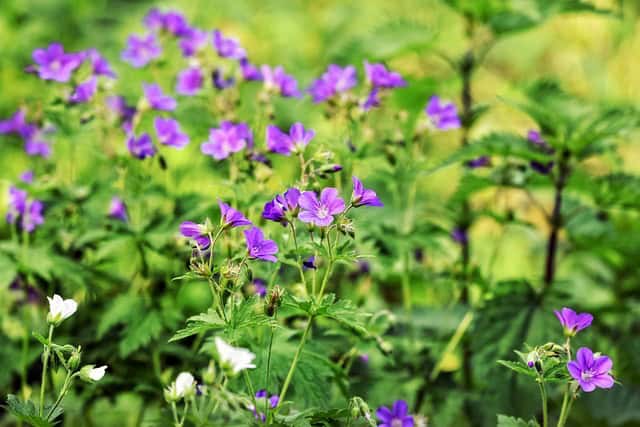
Geranium macrorrhizum, or Bigroot Geranium, is a robust perennial that offers lush foliage throughout the growing season. This shade-tolerant gem produces clusters of pink or white flowers in late spring and early summer, enchanting observers with its cheerful blooms that can last well into summer. Its extensive root system helps it thrive under challenging conditions, making it ideal for filling in shaded areas and creating cohesive garden spaces.
Black Cohosh
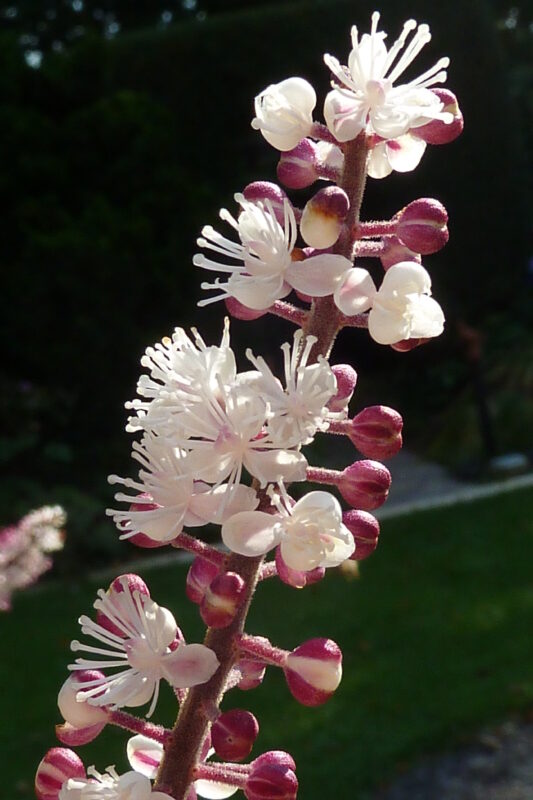
Actaea racemosa or Black Cohosh is celebrated for its unique flowering spikes that can reach impressive heights, making it an eye-catching component in shady areas. Its creamy-white flowers appear in late summer, drawing attention with their tall, ethereal presence. This perennial thrives in moist, rich soils where the shaded conditions mimicking its natural woodland habitat, allow it to flourish and attract beneficial pollinators to your garden.
Bleeding Heart
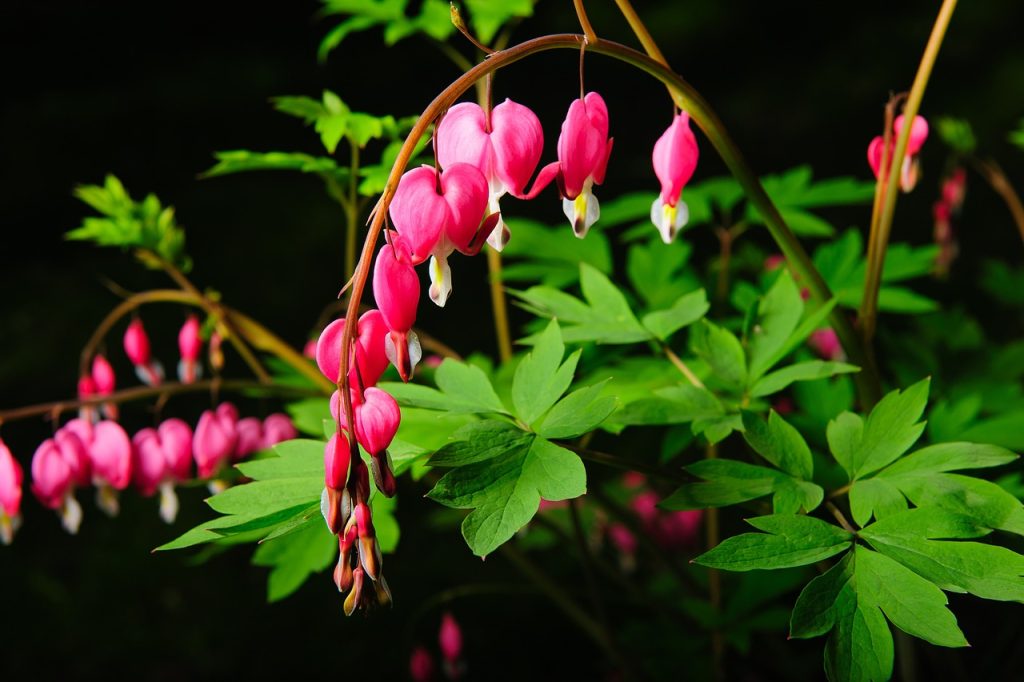
Dicentra spectabilis, also known as Bleeding Heart, is a beloved perennial that delights gardeners with its heart-shaped flowers. These delicate blooms appear in spring and can last well into the early summer, often providing beautiful bursts of pink or white. The lush, fern-like foliage adds softness to the garden, making Bleeding Heart a perfect choice for shaded spots. Its romantic aesthetic pairs wonderfully with other woodland plants, creating a whimsical feel under trees and in shaded borders.
Columbine
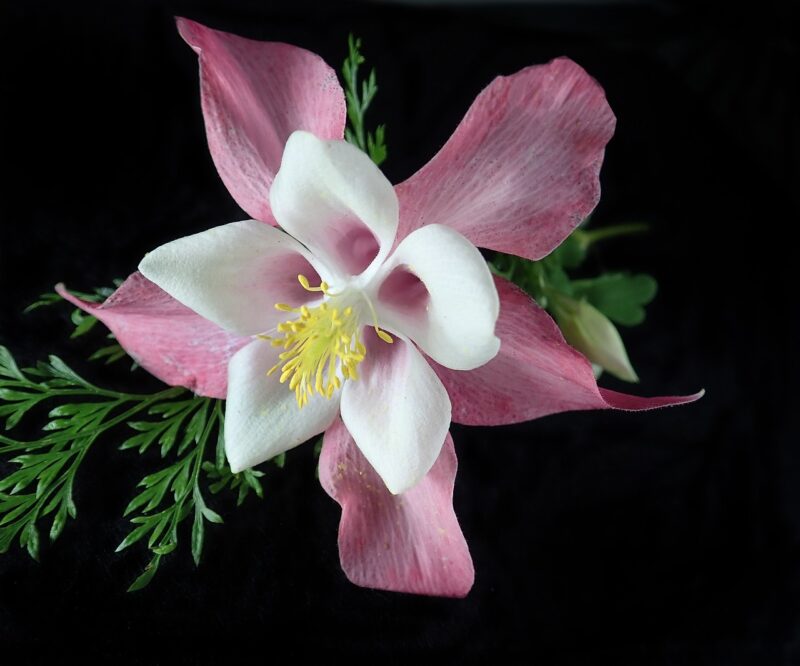
Aquilegia or Columbine is a versatile perennial that offers delightful, unique blooms in a myriad of colors including blue, red, yellow, and even bi-color varieties. Blooming from late spring to early summer, their quirky flowers attract hummingbirds, adding extra flair to your garden. While they prefer partial shade, Columbines are remarkably adaptable and can thrive in various environments. Their tall spires and delicate leaves create a graceful presence in your shade garden.
False Spirea
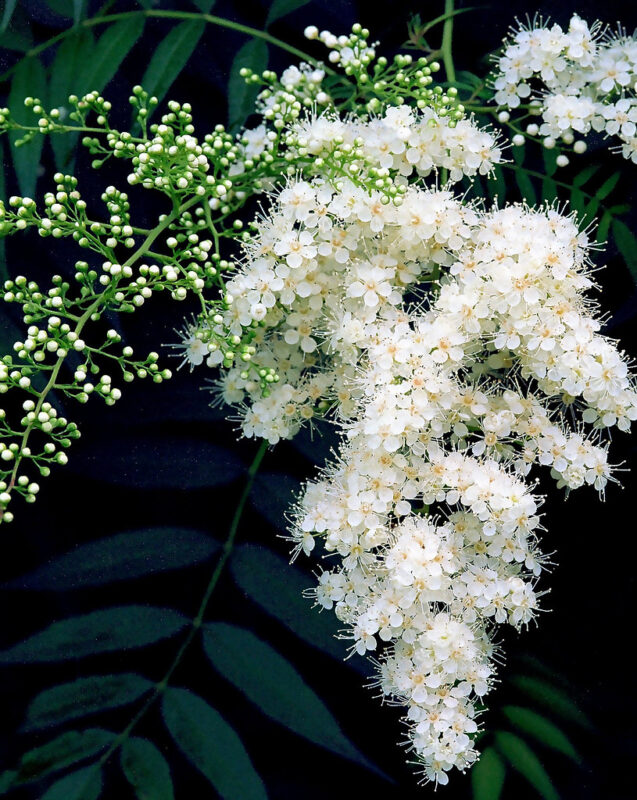
Sorbaria sorbifolia, commonly known as False Spirea, is the perfect addition to your shade garden with its plume-like clusters of white flowers that bloom throughout summer. Its lush foliage and arching habit can provide an attractive texture, creating a soft transition between sun and shade. False Spirea prefers moist soil and is excellent for creating borders or screening areas in your garden, where they can thrive in the cool shadows.
Foamflower
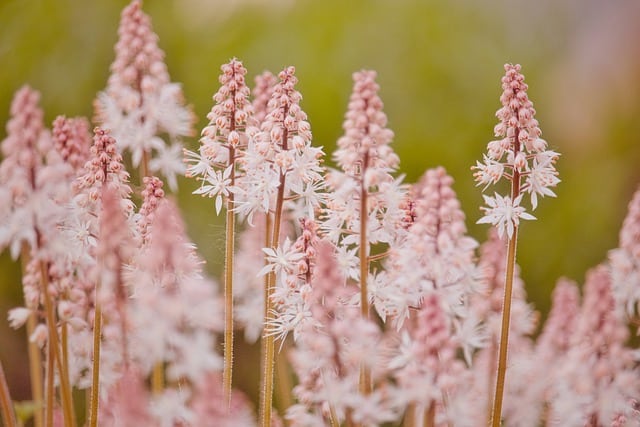
Tiarella cordifolia, or Foamflower, boasts beautiful frothy white flower spikes that blanket your garden in late spring and early summer. This low-growing perennial is known for its unique, lobed leaves that can assume beautiful colors in the fall. Preferring partial to full shade, Foamflower can adapt to various soil conditions. With its delicate blooms, it is perfect for enhancing shaded nooks or along woodland paths, creating enchanting displays that invite exploration.
Foxglove
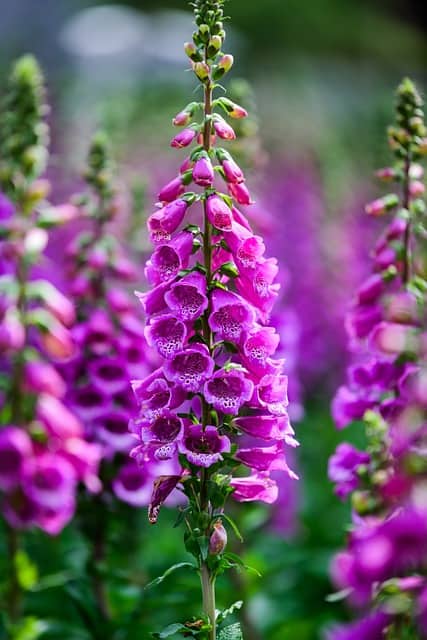
Digitalis purpurea, commonly known as Foxglove, produces tall, striking flower spikes that can command attention in any garden. The tubular blooms appear in a spectrum of colors, including purple, pink, and white, and can continue flowering throughout the summer. While Foxgloves prefer partial shade, they can thrive in diverse conditions, adding both height and drama to your shade garden. Their tall stature creates visual interest and structure while attracting bees and butterflies, making them a worthy investment for any garden space.
Ground Orchid
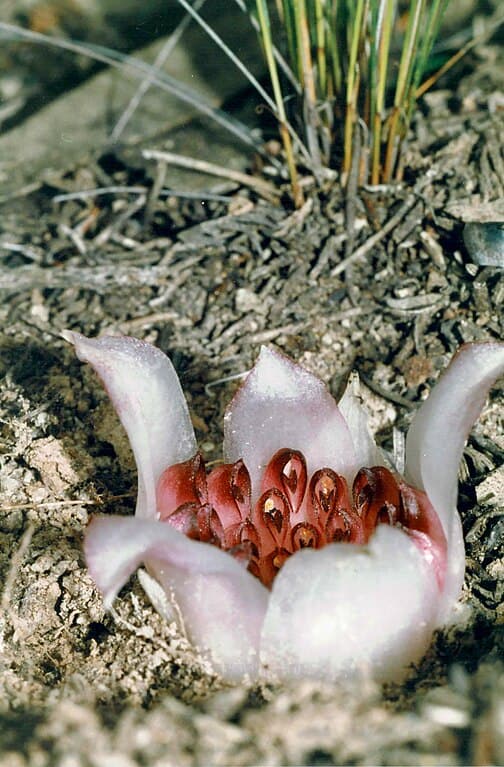
The Ground Orchid (Bletilla striata) is a temperate orchid that brings surprising beauty to shade gardens. With unique, showy flowers in shades of purple and white, they bloom from late spring through summer, offering elegance and refinement to shaded areas. Their foliage adds an exotic touch to the landscape, and they thrive in moist, well-draining soils. Ground Orchids make for compelling focal points in gardens and pair beautifully with other shade-loving plants.
Hardy Begonia
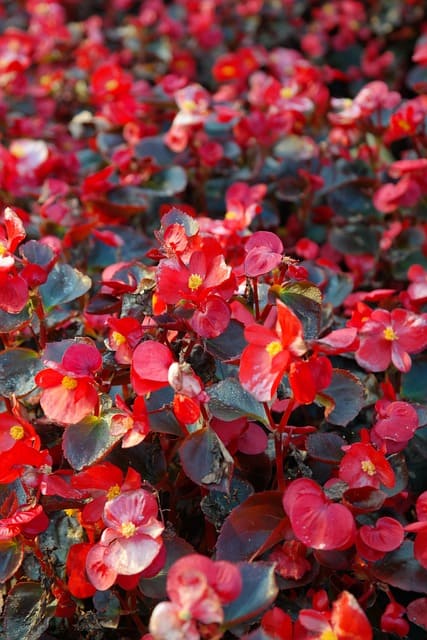
Begonia grandis is a charming perennial known for its lush foliage and dainty pink flowers that emerge throughout summer. Tolerant of varying conditions, including partial shade, it spreads gracefully over ground, adding texture and interest with its vibrant leaves. Hardy Begonias bring an elegant touch and can thrive in shaded areas, serving as a superb addition to any plant lover’s collection.
Hellebore
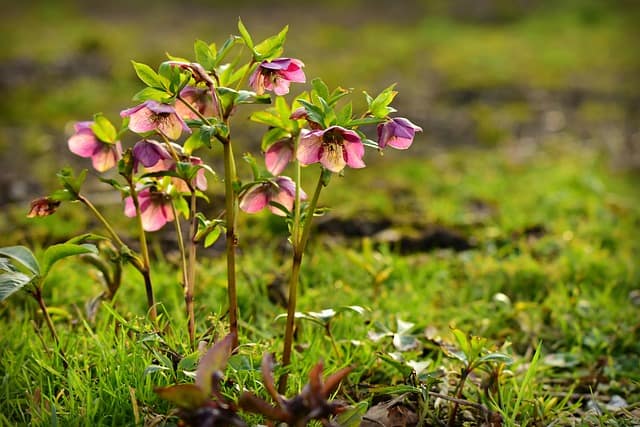
Helleborus or Hellebore is a garden favorite known for its early blooms that can last well into the summer. They thrive in shaded environments and often showcase breathtaking flowers in various colors—including white, purple, and pink. Hellebores are incredibly resilient and provide lush green foliage year-round. Their charm lies not just in their beauty but also in their ability to bloom in early spring, signaling new life after the winter months, making them a perfect choice for any shade lover.
Ligularia

Ligularia dentata is an exceptional shade plant boasting astoundingly large foliage and sunburst-like yellow flowers that bloom throughout summer. This perennial thrives in moist, rich soils and adds a tropical flair to shade gardens, combining drama and elegance seamlessly. With their bold presence, Ligularia can create stunning accents against other softer shades and textures, drawing eyes towards their vivid blooms.
Azure Blue Sage
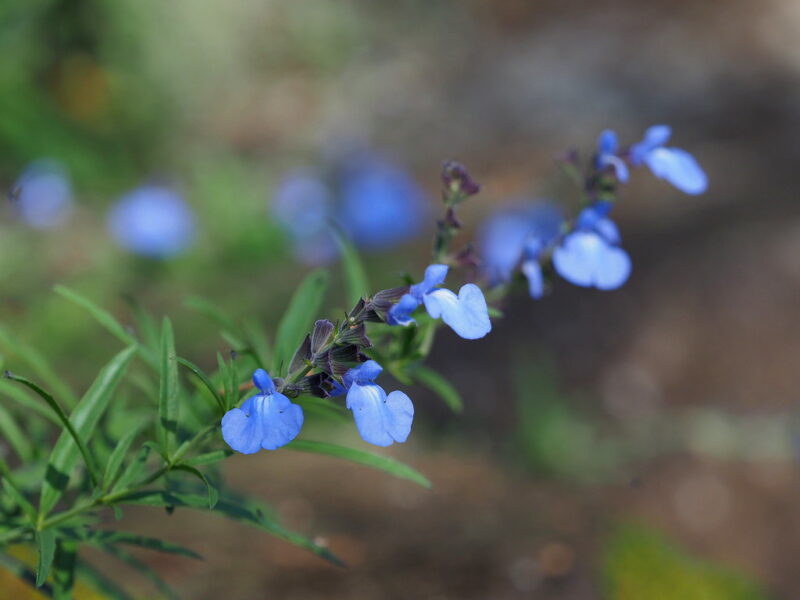
Salvia azurea or Azure Blue Sage is a fantastic addition to a shade garden. With its soft blue flowers, it blooms from summer into fall, thriving in the dappled light. While commonly favored for its aromatic foliage that attracts pollinators, its adaptability makes it suitable for a variety of garden settings. Azure Blue Sage provides an excellent pop of color, enhancing the visual appeal of your floral displays.
Anthurium
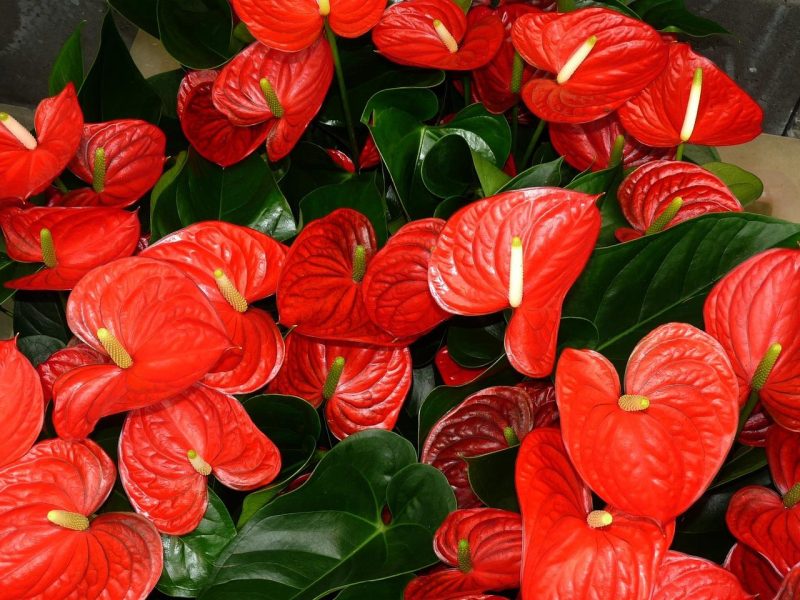
Anthurium is delightful for any garden enthusiast with a love for tropical flair. Known for its glossy spathes that can be red, pink, or white, this shade-loving perennial blooms intermittently throughout the summer. With its vibrant heart-shaped foliage and eye-catching flowers, Anthurium can be both indoor and outdoor choices, creating extraordinary displays with their exotic beauty.
Elephant Ear
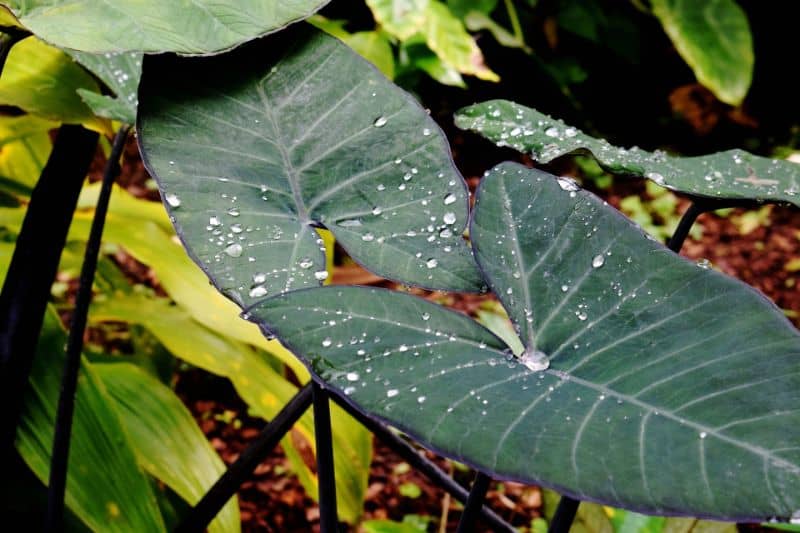
Colocasia or Elephant Ear is striking for its enormous, heart-shaped leaves that transform any shaded area into a tropical paradise. While not a traditional flowering plant, some cultivars produce striking, non-descript inflorescences. Elephant Ear thrives in moist, shaded conditions and can become a magnificent landscape focal point, enriching your gardening experience with its unique shape and texture.
Caladium
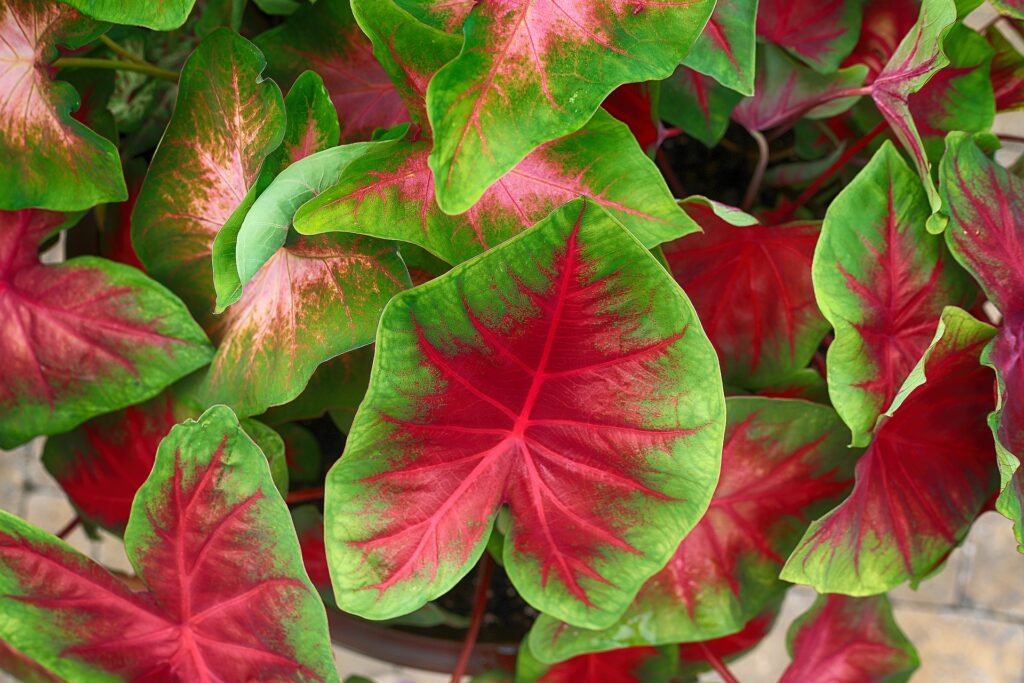
Finally, the Caladium is a brilliant choice for bringing dramatic color and aesthetics to your shade garden. With their stunning, heart-shaped leaves adorned with unique variegated patterns, Caladiums provide bright splashes of color even when flowers are sparse. Growing effectively in partial to full shade, these tropical plants are perfect for creating striking contrasts in your garden, as their exuberant foliage lasts all summer long.


